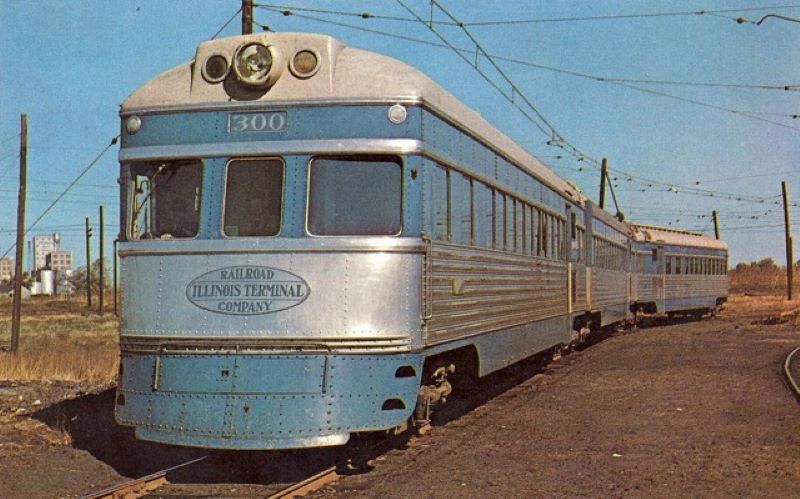Before our paved highways connected places in Illinois, we went by train. The reason was a simple one: Dirt roads were the standard of intercity travel as the century turned in 1900. But, Champaign businessman William B. McKinley (no relation to the President) had a better idea: Connect areas of Central Illinois by railroad. The solution he finally arrived at was a railroad powered by electricity. So, our region entered the era of electric interurbans in 1901.
Petersburg native McKinley was a University of Illinois graduate who made a considerable fortune in local banking and investments, and by 1902 was already a generous benefactor of the University, and a trustee. He also was a major player in getting the Illinois Power and Light Company up and running. That company was the perfect blend for McKinley’s vision for a railroad that would link Central Illinois communities, an electric railroad.
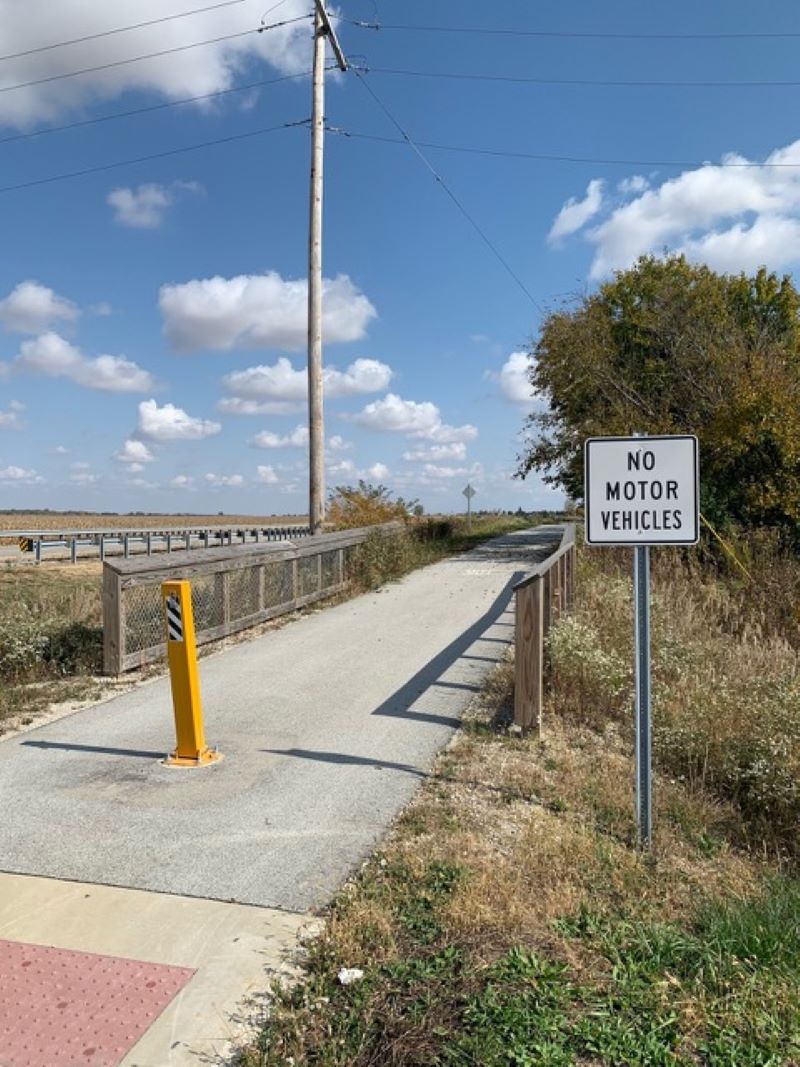
The Kickapoo Rail Trail runs over the old Illinois Traction right-of-way between High Cross Road in Urbana and St. Joseph. Photo by Jeff Nelson.
It started in Danville in 1901, when Danville and Westville were linked by electric rail. McKinley’s first great line was completed in 1903 and Champaign-Urbana was linked by electric rail to Danville.
In 1904, he incorporated the Illinois Traction System that consolidated many small power companies with the electric railroad. In 1923, the railroad was made a subsidiary of the Illinois Power and Light Company. The next decades saw massive growth of this railroad that would eventually sprawl over 400 miles of track in Illinois, connecting Danville with St. Louis.
But, McKinley had other interests; they were political. By 1905, he held a seat in the House of Representatives and by 1921 he was one of Illinois’ Senators. He slowly turned the management of the railroad over to professionals.
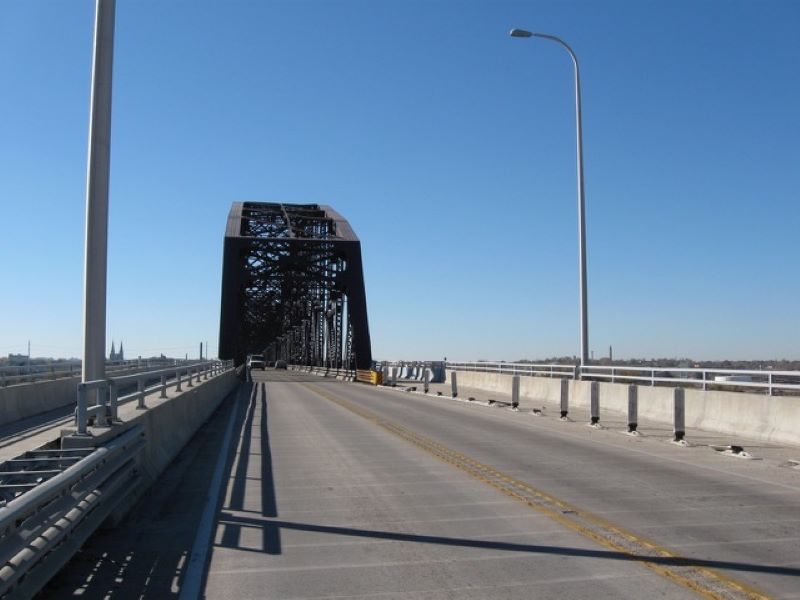
The McKinley Bridge today still connects Venice, Illinois, with north St. Louis. Its original purpose was to carry electric rail cars into St. Louis. Today, this rehabbed bridge carries automobiles, bicycles and pedestrians, but no trains. Photo by Jeff Nelson.
McKinley left a legacy as his life phased into Republican politics. In 1910, he built the still used and still named McKinley Bridge across the Mississippi to bring his electric cars into St. Louis.
The early days of the Illinois Traction System were so profitable, they attracted investors like Clement Studebaker of the South Bend automobile family and Chicago utilities giant Samuel Insull. By 1926, these two powerful businessmen essentially owned the Illinois Traction System.
Why was a Central Illinois electric railroad so attractive to big money people like Studebaker and Insull?
It was very profitable and it ran many routes not covered by the steam locomotive system. The route from Peoria to St. Louis was, for years, pretty much a domain of the Illinois Traction System. Better yet, these electric trains carried freight and that really enhanced profits. In areas where the Illinois Traction System did compete with steam railroads, it made arrangements to pick up freight and promoted its passenger service so successfully many potential rail passenger preferred the electric smoothness of this flourishing interurban.
In the 1920s, The Illinois Traction System was thriving, and its many routes offered service all over Central and Southern Illinois, carrying factory workers to plants in Decatur and Peoria and providing weekend excursions to Homer Lake on a branch from Ogden that ran from 1904 to 1929. Its freight cars carried coal, grain and later petroleum, and the profits were exceptional.
The next two decades would see a very different pattern from the steady growth of the 1920s. Starting with the Depression in 1929, many shorter and less profitable routes were cut. Investments were made to pump up the volume of the very profitable freight traffic by constructing bypasses around those city street car lines that so often served the railroad, including in Urbana and Champaign. It also gave up many city streetcar lines it owned, cut its formal ownership connection with The Illinois Power Company, and reorganized in 1937 under the name of the Illinois Terminal Railroad. Those moves enabled the newly minted Illinois Terminal Railroad to limp through the Depression.
The 1940s were a very different story. As the economy began to improve so did the profit margins of the Illinois Terminal Railroad. World War II provided boom years bringing factory workers to their jobs, especially from Decatur and Springfield to the ordinance plants in Illiopolis. Fifty-six additional coaches were purchased during the Second World War and by 1945, The Illinois Terminal Railroad was carrying 8.6 million passengers a year. The future looked promising and large investments were made in new rolling stock for both the freight and passenger divisions.
These were good years for the The Illinois Terminal Railroad, and many traditional steam lines were added around the St. Louis area for increased freight traffic as that area was a flourishing industrial area. Former Urbana Junior High School teacher, Tina Ekstrom, remembers using the Illinois Terminal trains to commute between her University of Illinois semesters and her home of Springfield: “Those trains were wonderfully convenient, smooth and cheap. I loved them and I miss them.”
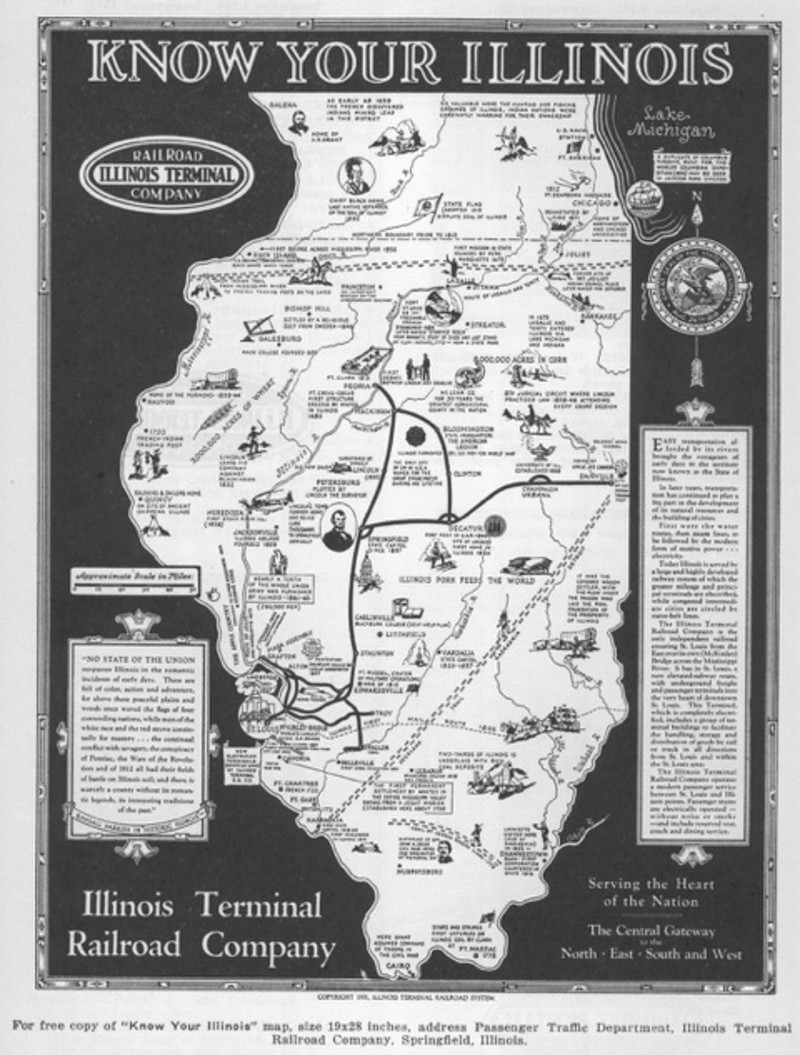
The Illinois Terminal Routes, post 1937. Even with some trimming, it was the largest electric interurban railroad in the Midwest. Image from the Illinois Traction Society website.
But, as the 1950s progressed, so did highway construction. Quality paved highways were great for automobile travelers and truck haulers, but often devastating to railroads. Even new and better rolling stock could not stop the bleeding of passenger profits to the highways. In 1956, The Illinois Terminal Railroad ended all passenger service. Some freight service survived after being dieselized and then was sold to the Norfolk Southern System in 1981.
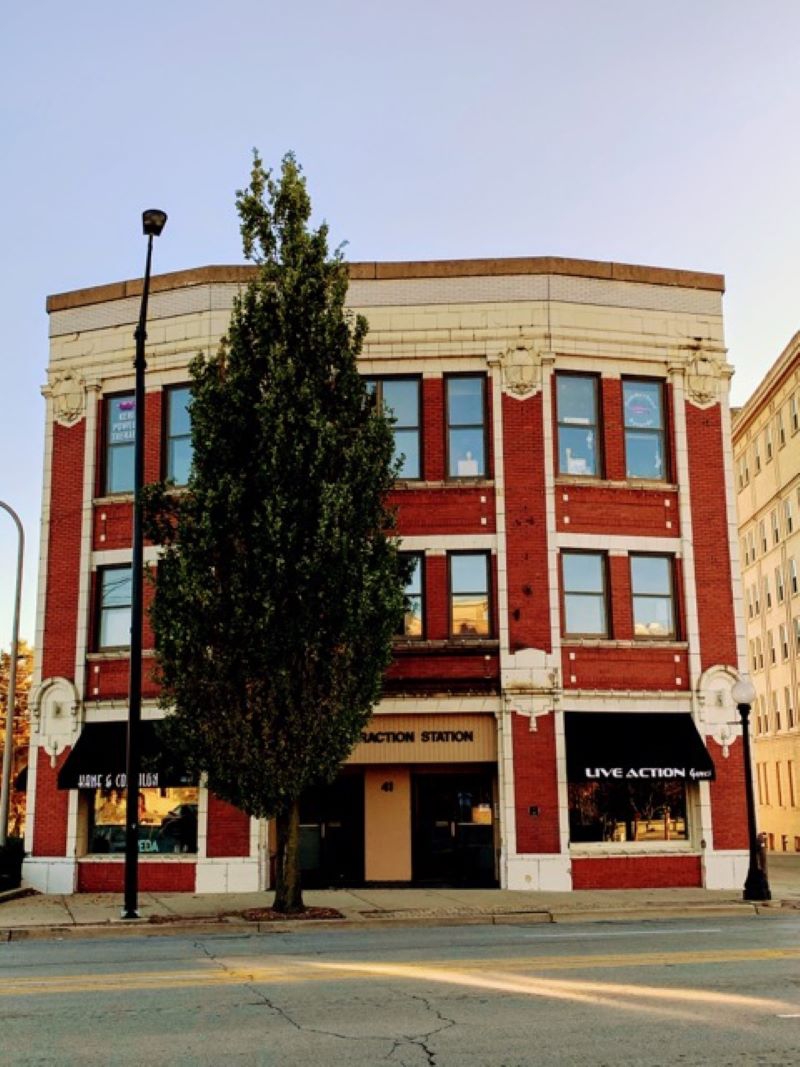
Completed in 1913, this building at 41 East University in downtown Champaign served as a depot for the Illinois Traction trains and was the corporate headquarters of the railroad to 1937. Illinois Power company maintained offie here until 1985. It is still called the Illinois Traction Building, though it has other clients. It is listed on the National Register of Historic Places. Photo by Jeff Nelson.
Its legacy is more than memories. Sections remain as bicycle and hiking trails. Many of its buildings have been transferred to other uses. McKinley’s generosity provided his alma mater with the McKinley Health Center, and the wealth he spread around Central and Southern Illinois has other remnants, like the McKinley Presbyterian Church and Foundation campus.
Perhaps the greatest testimonial to the Illinois Traction System/Illinois Terminal Railroad is its longevity. Hilton and Due in their amazingly thorough monograph,”The Electric Interurban Railways in America” computed that the average life of passenger service on an electric interurban was 28.3 years. The passenger service here lasted 55 years.
The electric interurban still survives in Northern and Southern Illinois. The South Shore Line still runs daily from Millennium Station in Chicago to South Bend Airport, and the St. Louis Metrolink system runs with great efficiency from St. Louis’ Lambert Field to Belleville, Illinois.








